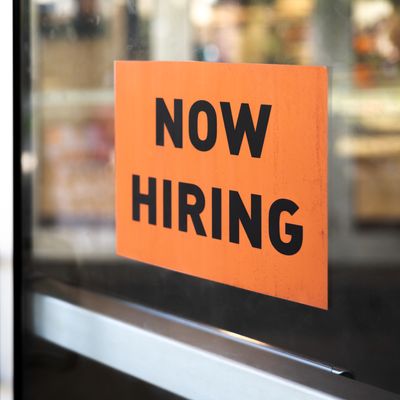
It’s reasonable to be worried about a recession. Banks have been failing, offices are closing, and it’s not like anything has been getting cheaper. Still, you have people like Neel Kashkari, the CEO of the Federal Reserve Bank of Minneapolis, saying that the economy is fine, that no downturn is on the horizon. It is all very confusing. When good data does come along, it seems to come with an asterisk. On Wednesday, the federal government released new information on the amount of jobs out there, and it was pretty great. Not only are businesses still hiring like crazy, they actually increased the total number of job listings in April. There were 10.1 million openings last month, according to the Bureau of Labor Statistics — nearly two for each of the 5.8 million unemployed. People are still quitting jobs for better ones, and fewer people are getting laid off. Good, right? Actually — this news sucked, and the Dow Jones Industrial Average fell 134 points Wednesday, at least partly in reaction to that number. We might even be edging closer to a recession because of it.
As a man of a certain age (I’m 36), when I come across something absurd or stupid about the way the world works, I grope around for a pop-culture reference to help my addled millennial brain feel at peace. Usually, this means something that happened on Seinfeld. Right now, “Bizarro Jerry,” the episode where Elaine starts dating someone who’s a non-jerk inverse of Jerry, comes to mind. “Up is down! Down is up! He says ‘hello’ when he leaves, ‘good-bye’ when he arrives!” Jerry whines. This is kind of like that. You may think it’s good that there are more jobs, but that’s where you’re wrong. These aren’t just jobs; they’re bizarro jobs. Eventually, they will create negative jobs. Up is down!
This is because these numbers ultimately matter to the executives at the Federal Reserve system, the ones who decide what interest rates we all should pay. For over a year now, the Fed, led by Chair Jerome Powell, has been trying to tamp down inflation by cooling the economy — essentially, diverting more of people’s money away from things like jobs and wages, and more toward interest payments. The worry was that this would lead to mass layoffs and potentially a recession. And for the last ten months or so, inflation has been going lower, indicating that the economy is cooling. Factor in jobs — unemployment is at 3.4 percent, the lowest point in decades — and surveys showing that consumers are happy and confident in the future, and this is just too much of a good thing for the Fed.
In the absence of clarity, the markets sold off. In the hours after the jobs report came out, traders thought there’s a 75 percent chance that the central bank will hike interest rates in two weeks — a reversal of the consensus view just last week that the Fed would cool it. (That, in turn, reversed when Wall Street Journal Fed Whisperer Nick Timiraos reported that the central bank was likely to pause in June). In fact, the belief that the Fed would back off and loosen the economy by the end of the year is starting to become less pervasive on Wall Street.
Not everyone is convinced that the economy is running as hot as these jobs numbers would indicate. Earlier this month, Goldman Sachs analyst Ronnie Walker issued a note that targeted the very jobs report that caused the market to sell off, called the JOLTS report. The survey relies on a sample size of respondents that’s been shrinking during the pandemic, he wrote, which is “raising questions about the survey’s reliability at a time when the focus on its monthly prints has never been greater.” Or, to put it another way: “Sample size a JOKE,” wrote Danielle DiMartino Booth, CEO and chief strategist at QI Research, on Twitter. In fact, the survey response fell to an all-time low. The question is whether this bakes in a bias toward companies that are hiring more — essentially, creating an assumption that, because the companies that do respond to the survey are hiring more, that all companies are doing the same thing.
Does this matter? Goldman seems to think that the JOLTS report is too high by about 200,000 to 300,000 jobs — a mere fraction of the total picture. And anyway, it’s been widely known that jobs data is kinda fudged. Talk to anyone who’s in the midst of a job search, and you’ll hear complaints about the number of supposedly fake job openings out there. The question is, to what degree does all that matter? The reality is that these caveats have all been out there, and the markets still fell. Remember, the Fed reacts to the whole economic picture, which is showing that it’s not really slowing down in any meaningful way — not yet, at least. Maybe things will hit the brakes soon, but a footnote in one report isn’t going to hold the Fed back from doing anything that it wants.






























